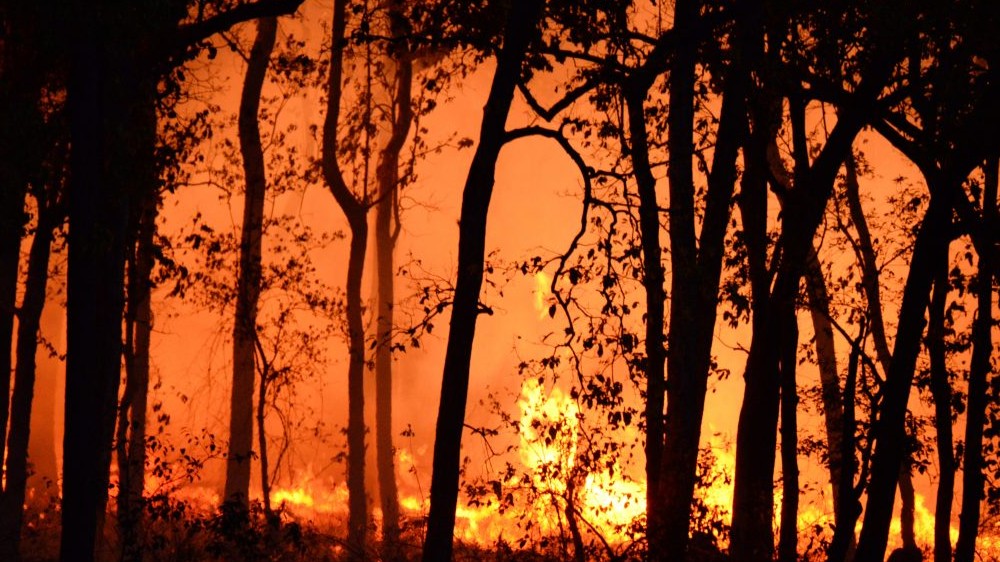August 17, 2020
Living on the bushfire frontier
At the University of Wollongong a team of experts are participating in a unique project with the aim of targeting the gaps in the scientific understanding of bushfires.
Under the Global Challenges project, researchers from the join this multi-disciplinary team that brings together specialists from social science, engineering and business to capture the complexity of bushfire events and how communities prepare for, respond to and recover from these destructive events.
In areas ranging from the physical interaction between fires and buildings, through to the social and societal factors that can help us build more bushfire-resilient communities, this project, along with other bushfire related work at UOW, will address the substantial hazard faced in Australia from these seasonal events.
SBRC researchers Dr Alan Green, Senior Professor Paul Cooper and Dr Matthew Daly will work with academics from across the university to develop new evidence, understanding and resources that can be shared across Australia to assist in building national community bushfire resilience.
“The work we’re doing will help shape strategies and policies for future bushfires, to minimise the damage they do and help communities recover more easily” Dr Green said.
The devastating summer of 19/20
Eastern Australia is one of the most fire-prone regions of the world and every year widespread fires ignite and burn with varying degrees of impact and devastation. But even the most seasoned of bushfire veterans was shocked at the extent and ferocity of the 2019-2020 bushfires.
The bushfire season started early due to the prolonged draught and hotter than average temperatures, and by March 2020 a geographic area of approximately 72,000 square miles across Victoria, New South Wales, South Australia and the Australian Capital Territory had been raised.
Multiple states of emergency were declared as cataclysmic fires destroyed over 5,900 buildings including 2,779 homes, and killed at least 34 people and billions of animals. For weeks fire fighters waged intense battles to save lives and properties as the nation choked through a summer of smoke.
Under the microscope
The researchers looked at the preventative measures people can take to mitigate the damage to property; retrofitting their houses and the efficacy of sprinkler systems.
- Retrofitting homes
Up to 50 homes were lost in the Currowan fire in the Kangaroo Valley where ferocious southerly winds propelled the fire to jump the Shoalhaven River. Residents had spent the preceding days preparing their homes and properties fearful for what was to come.
This study aims to build on the long-term bushfire resilience and recovery examining the real costs of retrofitting houses and what people are willing to pay to make their properties as safe as possible.
- Sprinkler Research
Sprinklers offer an alternative approach when retrofitting existing properties for bushfire resistance. Rather than looking at modifying the building itself, the aim of the sprinklers is to halt or limit the approach of the fire before it reaches the building.
While the theory of impeding the fire through a constant flow of water is sound, this research is taking some of the first steps needed to gain a scientific understanding of how bushfire sprinklers perform in the hot, windy conditions of a bushfire such as those of the Currowan fire.
The research looked at six spray systems and using videography, image analysis, droplet tracking and statistical correction, it measured the spray characteristics and performance of each system.
A work in progress
Dr Green said without doubt, more research is needed and with the Global Challenges project only just underway, this is happening right now.
“Running for a year alongside other projects, the university is engaging people from community, government and industry to shape strategies and policies for future bushfires,” he said.
“Preventing the loss of life and property and reducing the enormous financial and personal costs that come as a result of our Australian bushfires, is the goal.”
Researchers
- Paul Cooper (EIS) will oversee set-up, stakeholder liaison, data analysis, co-author publications promulgate findings to all levels of government, professionals and the community.
- Christine Eriksen (ASSH) will support the delivery of the social science aspects of the project, liaise with the RFS where necessary, and contribute to the write-up of co-authored publications.
- Joshua Whittaker (SMAH) will support the project set-up, assist with ethics approval, be principal liaison with RFS to ensure compatibility of this project with existing UOW/RFS post-fire research collaborations, co-author the publications.
- Tillmann Boehme (BAL) Leader of the Supply Chain and Logistics research project component. Supervisor the associated researcher fellow(s) delivering this component of the project.
- Scott McKinnon (ASSH) will support the project set-up, assist with obtaining ethics approval, conduct the in-depth interviews, carry out data analysis, co-author the publications
- Alan Green (EIS) will conduct assessment of buildings and retrofits, carry out data analysis, co-author the publications, and curate the Bushfire Retrofitting Options Database.
- Matthew Daly (EIS) will drive construction industry supply chain analysis: reconstruction planning & approval processes, industry capacity, housing solutions, needs of survivors met, etc.
The UN Sustainable Development Goals (SDGs) provide a shared global framework of development priorities including alleviating poverty, protecting the environment and ensuring a peaceful and prosperous world to live in. The University of Wollongong is committed to executing research that helps ensure the goals are achieved by the target of 2030.
This project is associated with SDG 11.
